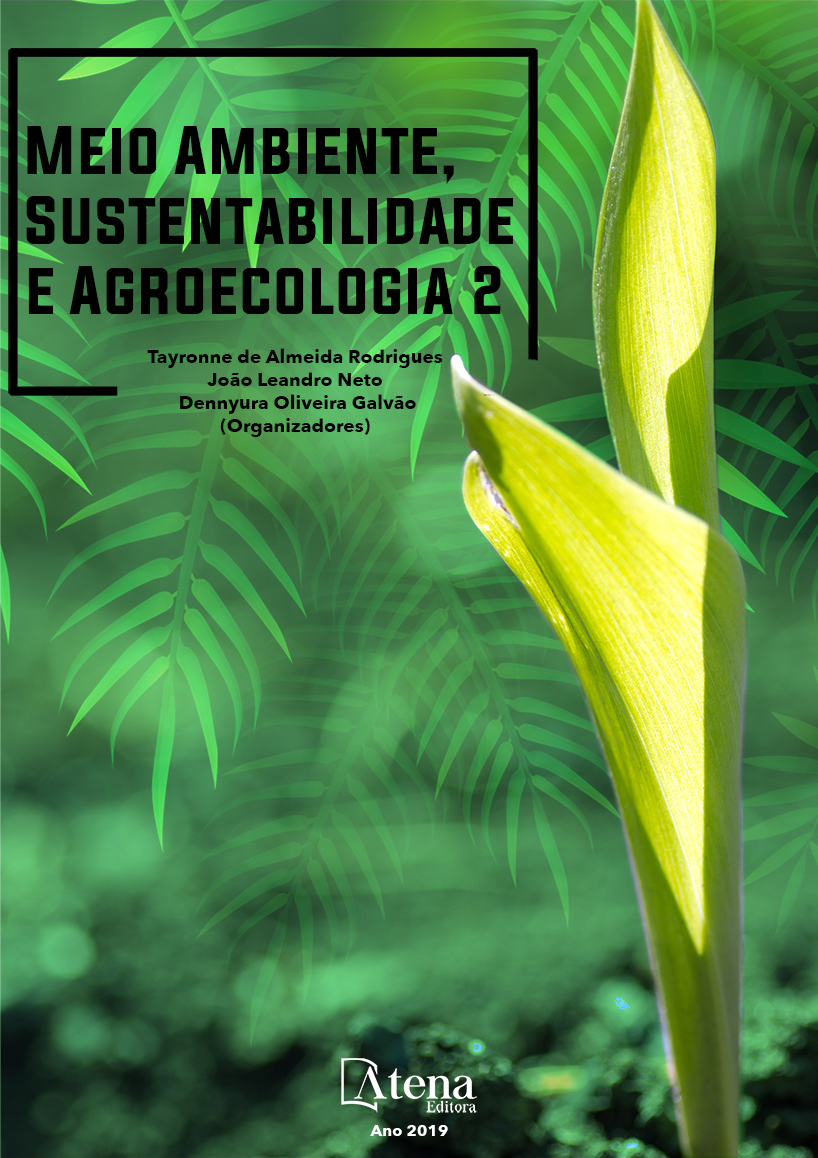
POTENCIAL DE UTILIZAÇÃO DA ÁGUA RESIDUÁRIA NO MUNICÍPIO DE FEIRA DE SANTANA PARA O CULTIVO DE MILHO
O reuso do efluente doméstico
tratado surge como alternativa para prevenir a
escassez da água e ao mesmo tempo contribui
com a agricultura, reduzindo o lançamento de
esgotos nos corpos receptores, possibilitando
a substituição parcial de fertilizantes químicos,
proporcionando aumento na produção e
economia de água voltada para a irrigação.
Assim, este trabalho teve como objetivo avaliar
o potencial de utilização da água residuária
tratada no município de Feira de Santana-BA
para a irrigação da cultura do milho. Neste
estudo foram obtidos dados por meio de revisão
bibliográfica para dimensionar à produção.
Portanto, estimou-se a quantidade deste
cereal que poderia ser produzida anualmente,
com base no valor da produtividade média do
milho na Bahia, considerando a necessidade
hídrica média da planta. Os resultados
obtidos mostraram que existe um potencial
de reutilização de água residuária tratada no
município de Feira de Santana para irrigar uma
área de 1066,24 ha, obtendo uma produtividade
anual de milho de 8.892,44 toneladas. Como
uma das diversas utilizações desse cereal,
a produção de ração para avicultura poderia
abastecer o polo avícola instalado na própria
região, atendendo a produção diária de abate de
cerca de 265.000 aves, podendo aumentar essa
produção em 75%. Além disso, a utilização da
água residuária poderia reduzir a pegada hídrica
da carne de frango na Região Metropolitana de
Feira de Santana e evitar a importação de água
virtual do oeste do Estado, região essa que
abastece essa cadeia produtiva.
POTENCIAL DE UTILIZAÇÃO DA ÁGUA RESIDUÁRIA NO MUNICÍPIO DE FEIRA DE SANTANA PARA O CULTIVO DE MILHO
-
DOI: 10.22533/at.ed.28619160424
-
Palavras-chave: Reuso de água; águas residuárias; agricultura; milho.
-
Keywords: Water reuse; wastewater; agriculture; corn.
-
Abstract:
The reuse of the treated domestic
effluent appears as an alternative to prevent
water scarcity and at the same time contributes
to agriculture, reducing the release of sewage
into the receiving bodies, allowing the partial
replacement of chemical fertilizers, providing
increased production and saving of water for irrigation. Thus, the objective of this work
was to evaluate the potential utilization of treated wastewater in the municipality of
Feira de Santana-BA for the irrigation of corn crop. In this study data were obtained by
means of a bibliographical revision to size the production. Therefore, it was estimated
the quantity of this cereal that could be produced annually, based on the value of the
average corn yield in Bahia, considering the average water requirement of the plant.
The results showed that there is a potential for reutilization of treated wastewater in the
municipality of Feira de Santana to irrigate an area of 1066.24 ha, obtaining an annual
yield of maize of 8,892.44 tons. As one of several uses of this cereal, the production
of poultry ration could supply the poultry pole installed in the region itself, taking into
account the daily slaughtering of about 265,000 birds, which could increase this
production by 75%. In addition, the use of wastewater could reduce the water footprint
of chicken meat in the Feira de Santana Metropolitan Region and avoid the importation
of virtual water from the western state, which supplies this productive chain.
-
Número de páginas: 15
- Priscila Freitas Santos
- Isabella Albergaria Pedreira
- Anderson Carneiro de Souza
- Eduardo Henrique Borges Cohim Silva


